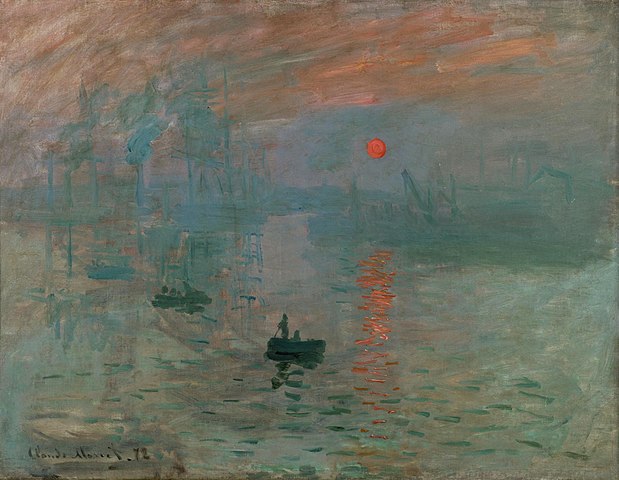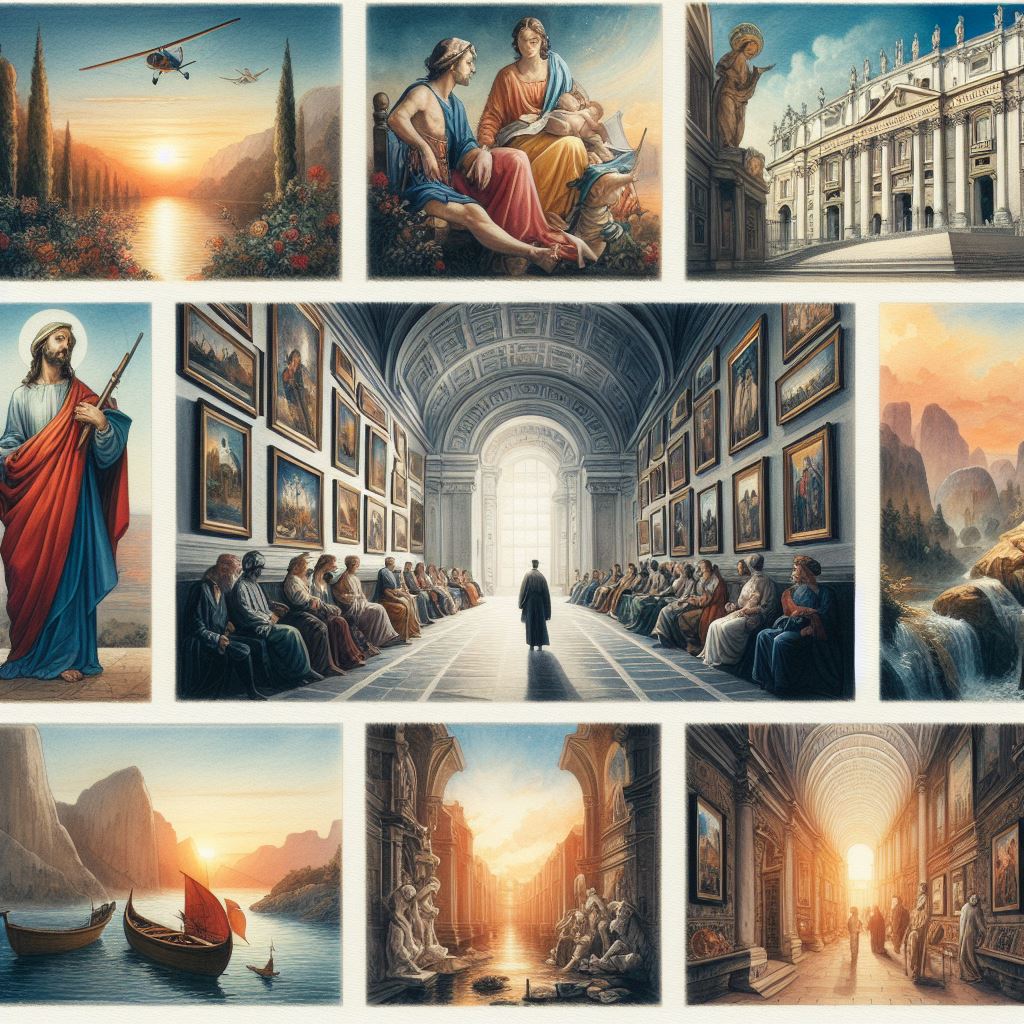Throughout history, portrait paintings have played an important role in conveying power and establishing authority. From royal families to heads of state, sitting for a portrait was a way for leaders to immortalize themselves and symbolize their influence. In this article, we will explore the top 10 most Influential Portrait Paintings based on their cultural and historical impact.
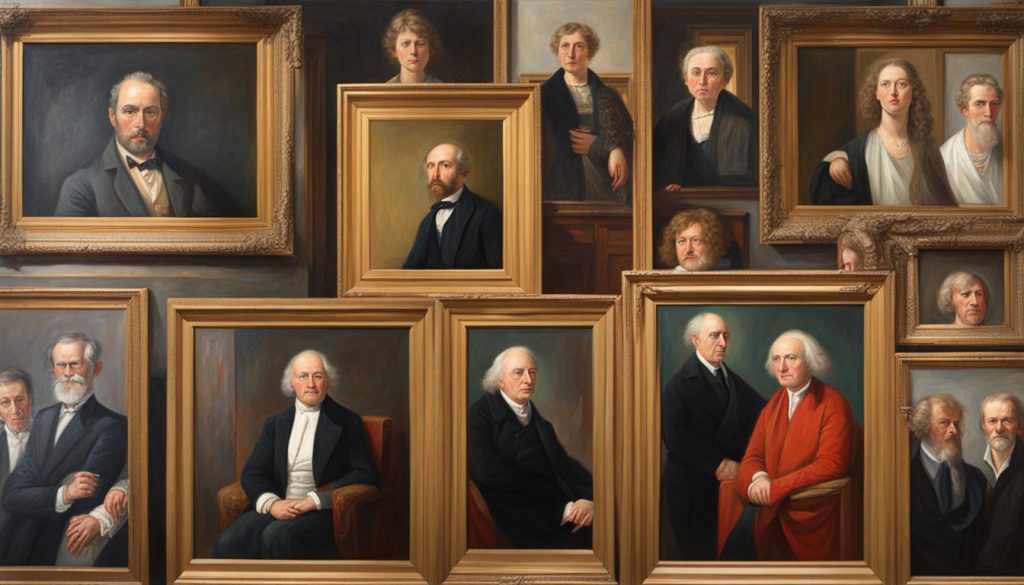
The Coronation of Napoleon by Jacques-Louis David (1805-1807)
As the first one in our list of most Influential Portrait Paintings, Jacques-Louis David’s painting of Napoleon’s coronation had a massive impact on cementing Napoleon’s authority as Emperor of France. Through David’s Neoclassical style and use of symbolic imagery, the painting framed Napoleon’s coronation as a fated event that returned glory to France. It remains one of the quintessential portraits of its era.
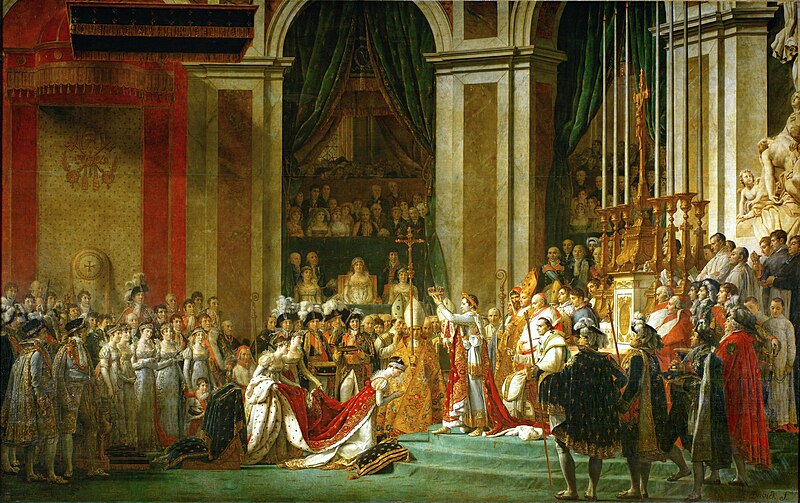
George Washington (1796) by Gilbert Stuart
“Of all the portraits ever made of George Washington, Stuart’s so-called ‘Lansdowne portrait’ is considered the most authentic and universally acknowledged likeness”
David McCullough
Our second Influential Portrait Paintings: Gilbert Stuart’s full-length portrait of George Washington from 1796 is arguably the most iconic image of the first president. Commissioned by Washington himself, the painting captures Washington in a dignified and stately manner that exemplified his leadership as the new nation’s founding father. Even today, Stuart’s portrait remains ubiquitous as the base for Washington’s image on the US one-dollar bill. It perfectly captures Washington at the height of his influence and established the visual language for how Americans perceive their first president.
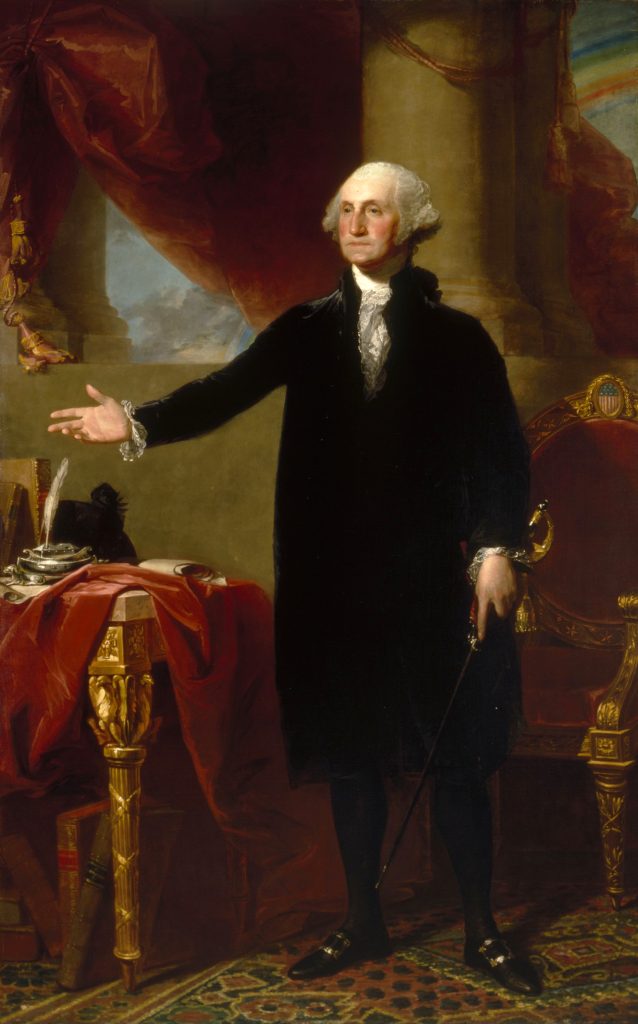
The Coronation of Queen Victoria (1838) by Sir George Hayter
Hayter’s massive painting depicts Queen Victoria’s coronation on June 28, 1838, at Westminster Abbey. At only 18 years old, Victoria became Queen of the United Kingdom as well as Empress of India. Hayter strategically framed Victoria as the rightful heir, surrounded by authority figures such as the archbishop. The painting established Victoria’s regal image during her 63-year reign and solidified the British monarchy’s place on the global stage through the height of its imperial power. It remains one of the most iconic and Influential Portrait Paintings of the Victorian era.
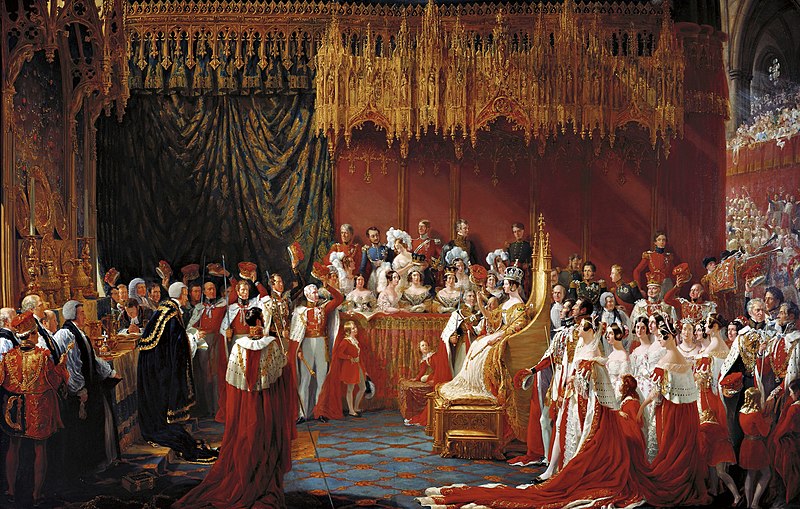
Andrew Jackson (1845) by Ralph Eleaser Whiteside Earl
- Earl’s portrait of Andrew Jackson framed “Old Hickory” as a bastion of American egalitarian values and democratic leadership at a pivotal moment for the young nation.
- Commissioned several years after Jackson left the presidency, the painting reflects how Jackson’s reputation as a war hero and champion of the common man grew into mythical proportions after leaving office.
Earl succeeded at capturing Jackson’s stern and stubborn character, which aligned perfectly with the burgeoning American ideal he came to represent for the masses. This most Influential Portrait Painting established the visual cue for Jackson that persists to this day and was hugely influential in solidifying his legendary status.
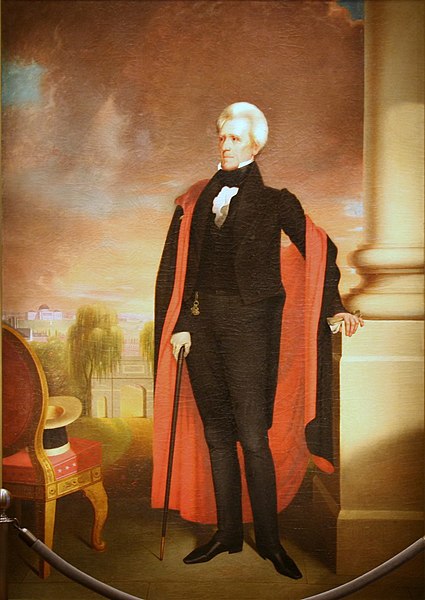
The Death of Marat (1793) by Jacques-Louis David
“The most famous revolutionary martyr of the French Revolution met his end in this perhaps most influential work of neo-classical propaganda.”
The Art Story
Considered one of the most profound pieces of propaganda art ever made, David’s unflinching depiction of Jean-Paul Marat’s assassination transformed the radical journalist into an immortalized symbol of revolutionary republicanism. Marat is shown peacefully at rest after his murder by Charlotte Corday, illuminating his flesh wound for all to see. David framed Marat as a Christ-like martyr for the cause. The painting electrified France and fueled further radicalization, demonstrating art’s ability to change the course of history through its Influential message.
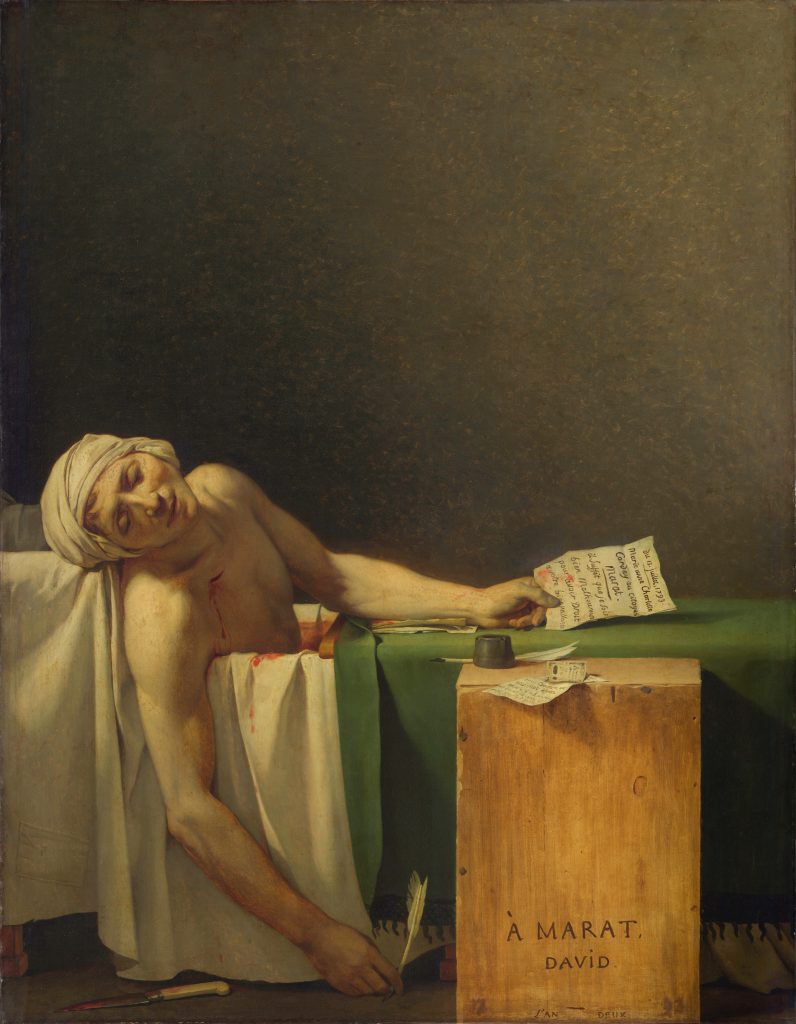
The Execution of Lady Jane Grey (1833) by Paul Delaroche
- Delaroche crafted the shortest reigning Queen of England, Lady Jane Grey, into a romanticized tragic heroine in this painting depicting her execution.
- Through his affecting scene, Delaroche fueled Victorian era fascination with Grey and reshaped how later generations viewed her doomed nine-day rule, ultimately earning her more sympathy.
By reframing her demise as an unjust tragedy rather than a threat to the monarchy, Delaroche leveraged art to subtly shift the political narrative around one of history’s most controversial figures. The painting retains its prominence as one of the most dramatic portraits from European history.
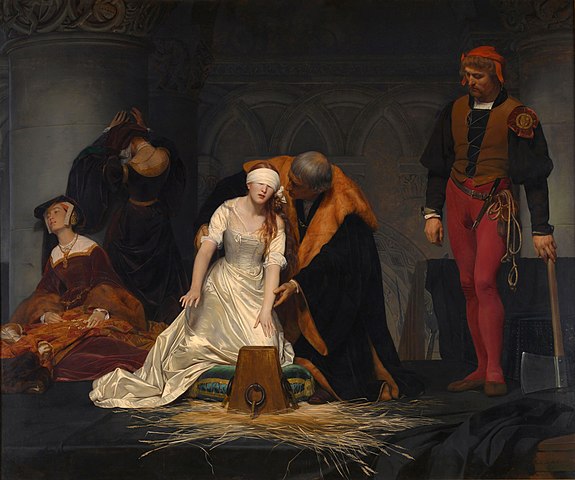
George Washington at Princeton (1779) by Charles Willson Peale
Peale’s portrait of George Washington at the Battle of Princeton in 1779 deserves recognition. Though a military scene rather than a traditional portrait, Peale wonderfully captures Washington taking command amidst the heat of revolutionary struggle. The painting established Washington as a resolute yet stoic military leader, further cementing his stature as the fledgling nation’s shepherd during its most perilous time. Even over 200 years later, it defines how we perceive Washington’s valor and fortitude during the American Revolution’s pivotal Trenton-Princeton campaign.
To conclude our list of the top 10 most Influential Portrait Paintings in history based on their cultural and political impact:
- Las Meninas (1656) by Diego Velázquez depicts the Infanta Margarita Teresa surrounded by her maids of honor, a dwarf, and two dogs. It is considered one of the most important works of the Spanish Golden Age and is known for its complex composition and use of light and shadow.
- The Arnolfini Portrait (1434) by Jan van Eyck is a double portrait of Giovanni Arnolfini and his wife, Giovanna Cenami. It is one of the most famous and influential portraits of the Early Netherlandish Renaissance and is known for its realism, detail, and use of symbolism.
- The Mona Lisa (1503-1519) by Leonardo da Vinci is a portrait of Lisa del Giocondo, a Florentine woman. It is one of the most famous and iconic paintings in the world and is known for its enigmatic smile, subtle modeling, and use of sfumato.
Conclusion about the Most Influential Portrait Paintings
In conclusion, the paintings explored here represent but a fraction of history’s vast portrait archive. However, each work leveraged its emotive, symbolic, and propagandistic qualities to profoundly shape how its subject was viewed for generations to come. From crowning new empires to fueling revolutions, these 10 Influential Portrait Paintings demonstrate art’s unparalleled ability to define legacies and establish iconic cultural perceptions that still guide us today. Their immense political impact underscores why the portrait genre remains one of art history’s most fertile fields for unveiling windows into the souls of those who shaped our world.
